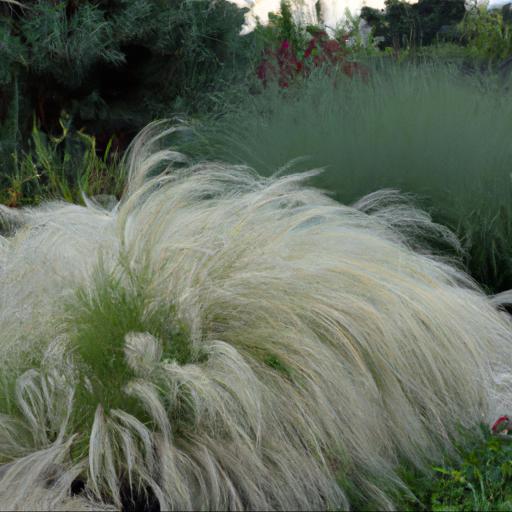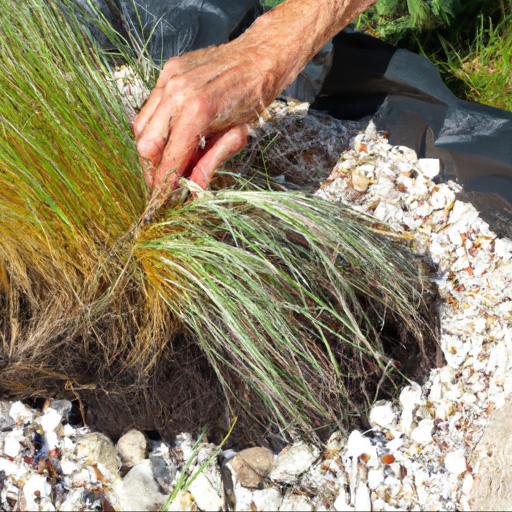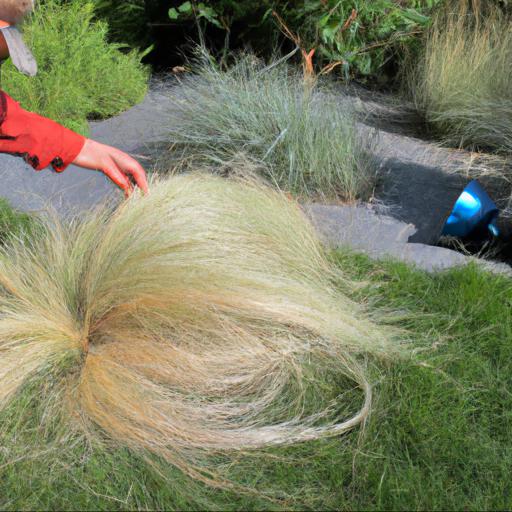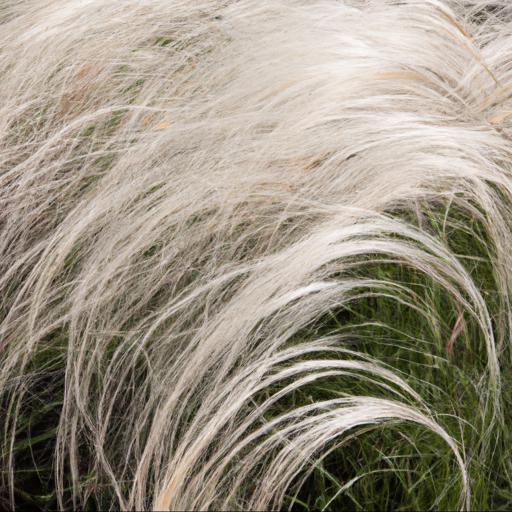Stipa gigantea, commonly known as Giant Feather Grass, is an ornamental grass native to Europe, Asia, and North Africa. It is a popular choice for landscaping and is often used to create a dramatic, textured effect in the garden. This grass is drought tolerant and requires little maintenance, making it an ideal choice for adding texture and color to any garden.
Its foliage is a silvery-green color, and its flowers are long, feathery plumes that are a beautiful addition to any landscape. Stipa gigantea can be planted in full sun or partial shade, and it can be used as a specimen plant or in groupings.
With its unique texture and color, Stipa gigantea is the perfect choice for adding a touch of drama to any garden.
Benefits of growing stipa gigantea

. Growing Stipa gigantea, also known as giant feather grass, can provide many benefits for both gardens and environment.
It is an attractive, flour-like grass that is highly ornamental and can capture the texture and patterns of the wind. Since it is a fast-growing, low-maintenance grass, Stipa gigantea can be easily added to any garden or planting bed. One of the main benefits of Stipa gigantea is its drought-resistance.
Like other drought-resistant plants, it can survive and thrive in even harsh climates with low-level soil. Its deep roots are also helpful in anchoring soil and preventing erosion in drier climates.
This makes it an ideal choice for gardens in arid or semi-arid areas with less water. Another benefit of Stipa gigantea is its ability to produce airborne seeds. These seeds act as a natural insect repellent and can help protect your garden against pests.
They also helps to disperse other beneficial organisms, such as pollinators, which aids in the health of your local environment. Furthermore, Stipa gigantea helps to create a year-round visual effect in your garden and attracts beneficial insects such as dragonflies and butterflies.
Overall, Stipa gigantea offers numerous benefits for both gardeners and the environment. Its drought-resistance, quick growth rate, and ability to create a thriving ecosystem make it an ideal choice for many gardens. This hardy grass is perfect for gardeners looking for an easy-to-maintain, low-maintenance plant that provides numerous aesthetic and environmental benefits.
How to plant stipa gigantea

Growing the majestic Stipa gigantea, or the Giant Feather Grass, can be an incredibly rewarding experience for gardeners across the UK. Not only is it a uniquely ornamental grass that adds texture and architectural interest to your garden, but it also has a host of benefits for your native ecology.
The Giant Feather Grass is as easy to grow as it is to admire. It thrives in a range of soils, and though it can sometimes be more challenging in wet wintery climates, it produced abundant flowers when grown in full sun. Plant the grass in the springtime and make sure that the root balls are firmly packed in the ground.
The grass should be spaced a minimum of 1 foot apart, leaving plenty of room for the grass to grow into its stunningly full form. It’s important to be aware of the Giant Feather Grass’s self-seeding ability, as it has the potential to take over any nearby planting beds and choke out native species. To avoid this, be sure to regularly mow the delicate flower heads to prevent them from going to seed.
You may also want to think about digging up and transplanting some excess sprouts that might be overcrowding your garden. With adequate care, Stipa gigantea will provide a long-lasting and beautiful presence in your garden bed.
Care and maintenance of stipa gigantea

Stipa gigantea, or giant feather grass as it is commonly known, is one of the most popular ornamental grasses used in landscaping and gardening today. Native to North America, Europe and parts of Asia, this clump-forming perennial grass is known for its eye-catching panicles and soft, bluish-green foliage.
When planted in raised gardens or even mixed containers, Stipa gigantea will add texture and interest to any yard. When responsible care and maintenance is employed, this attractive ornamental grass will not only enhance the beauty of a landscape but will also grow and flourish for many years. When selecting a location for Stipa gigantea, look for a sunny area that gets at least 6 hours of sunlight a day.
The soil should be fertile, well drained and slightly acidic for best results. If planting in a container, a good quality potting soil should be used to ensure proper drainage and aeration. To ensure the grass will thrive, make sure the hole is at least twice the size of the root ball.
After planting, make sure the foliage is watered periodically and water deeply to keep the roots moist. Once the plant is well-established, monthly fertilization with a general-purpose fertilizer will help encourage growth and maintain the grass’s health.
In the fall, trim off any dead or damaged foliage and stems and cut back the previous season’s growth. This will make the Stipa gigantea look neat and attractive and will also help promote optimal air flow and sunlight. With proper care and maintenance, Stipa gigantea will be an eye-catching addition to any garden or yard.
This attractive ornamental grass can help brighten up a landscape and bring life to any space. In addition to its beauty, many homeowners appreciate the fact that Stipa gigantea requires minimal maintenance, allowing them to enjoy their favorite hobby without spending all their time taking care of the grass.
Common problems with stipa gigantea
Stipa gigantea, or Giant Feather Grass, is a beautiful ornamental grass that is widely used in landscaping and garden design. Although it is drought-tolerant and generally low maintenance, it can sometimes present some problems.
Here are a few of the common issues that come up with Stipa gigantea, and what can be done to address them. Firstly, Stipa gigantea is an exceedingly large grass, often reaching heights of 8 to 10 feet. This can be a problem for smaller gardens, as it can easily dominate the space and obscure other plants.
If this is a concern, gardeners can prune the grass back to the desired size. This should be done in late spring or early summer when the grass is in its most active growth phase.
In addition, Stipa gigantea is a deciduous grass, so in order to look its best during the winter, it’s important to give it a deep trim in the fall. This will help keep the grass from becoming a scruffy mess. The best time to do this is in late autumn when the leaves start to die off.
Using a sharp pair of shears or hand pruners, trim the grass down to the desired size, but be careful not to cut too low or it won’t be able to grow back the following spring. Finally, if Stipa gigantea becomes infested with insects or disease, it’s important to take steps to address the issue.
Insects like aphids and mites can be prevented with regular applications of insecticide, while diseases like powdery mildew can be prevented with regular fungicide applications. If the problem persists, it’s best to seek professional help from a local garden center or plant nursery. In conclusion, Stipa gigantea is a beautiful ornamental grass that can add a charming touch to any garden.
However, it’s important to take into account the issues that can arise with this large grass, and to be prepared to address them as needed. With proper maintenance and care, Stipa gigantea can bring a stunning touch to any landscape.
Conclusion
Stipa gigantea, commonly known as giant feather grass, is a species of grass native to the Mediterranean region. It is a perennial grass that grows up to two meters in height and has long, thin blades. The flowers are arranged in a spike-like inflorescence and are light yellow in color.
It is a popular ornamental grass, often used in landscaping for its striking appearance and low maintenance requirements. Stipa gigantea is an easy to care for grass that adds texture and movement to gardens and landscapes.
FAQ
What is the scientific name of Stipa gigantea?
The scientific name of Stipa gigantea is Achnatherum giganteum.
Where is Stipa gigantea native to?
Stipa gigantea is native to the Mediterranean region, including parts of Spain, Portugal, Italy, and North Africa.
What type of climate does Stipa gigantea prefer?
Stipa gigantea prefers a warm, dry climate with full sun exposure.
How tall can Stipa gigantea grow?
Stipa gigantea can grow up to 3 meters tall.
What type of soil does Stipa gigantea need to thrive?
Stipa gigantea needs well-drained, sandy soil with a neutral to slightly alkaline pH to thrive.
What type of maintenance is required for Stipa gigantea?
Stipa gigantea requires regular watering and fertilizing, as well as occasional pruning and deadheading to keep the plant healthy and looking its best.

